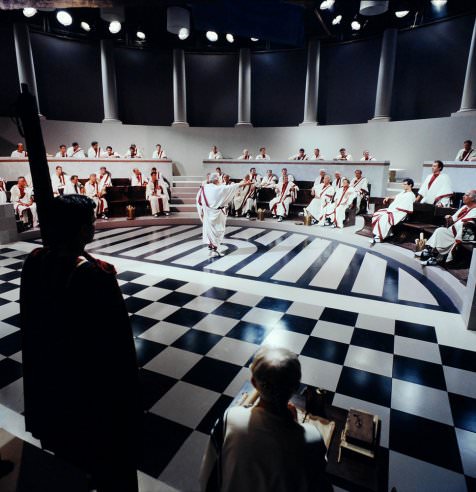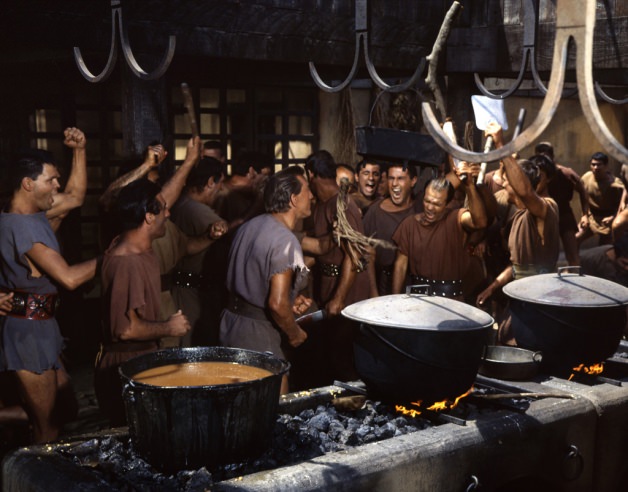Stanley Kubrick’s 1960 masterpiece, Spartacus, remains a cinematic landmark. This epic historical drama tells the story of a Thracian gladiator who leads a slave revolt against the mighty Roman Republic. More than just a sword-and-sandal spectacle, the film explores themes of freedom, courage, and the human spirit’s indomitable will. Let’s delve into the fascinating details of how this iconic film was brought to life.
Spartacus is based on the true story of a gladiator who ignited the Third Servile War, a massive slave uprising against Roman rule. The film, however, takes some creative liberties, adding fictional characters and storylines to enhance the drama. At its core, the film follows Spartacus’ journey from a captured slave to a legendary leader who challenges the very foundation of Roman power.
Read more
Bringing Together a Stellar Cast
The film boasts a remarkable ensemble cast, led by Kirk Douglas as the titular Spartacus. Douglas, already a Hollywood superstar, brought a raw intensity and charisma to the role, perfectly embodying the gladiator’s strength and determination.
Laurence Olivier, a titan of British theater, delivers a chilling performance as Marcus Licinius Crassus, the ambitious Roman general who seeks to crush the rebellion. The supporting cast is equally impressive, featuring Charles Laughton as the cunning senator Gracchus, Peter Ustinov as the slave trader Batiatus (a role that earned him an Academy Award), and Jean Simmons as Varinia, Spartacus’ beloved wife.
Behind the Scenes
Bringing Spartacus to the screen was a monumental undertaking. The film was one of the most expensive productions of its time, with a budget exceeding $12 million. This allowed for grand sets, elaborate costumes, and thousands of extras to recreate the scale of ancient Rome and its armies.
Filming took place primarily in Spain, with its diverse landscapes standing in for various locations in the Roman Republic. The climactic battle scenes, involving thousands of actors and horses, were particularly challenging to film. Kubrick’s meticulous attention to detail and his innovative use of camera techniques brought these scenes to life with breathtaking realism.
Costumes and Set Design
The costumes in Spartacus played a crucial role in establishing the film’s historical authenticity and visual grandeur. Costume designer Bill Travilla meticulously researched Roman attire, creating thousands of costumes for the actors and extras. From the simple tunics of the slaves to the elaborate armor of the Roman legions, the costumes helped transport viewers back to the ancient world.
The film’s sets were equally impressive. Production designer Alexander Golitzen oversaw the construction of massive sets, including the gladiator training school, the Roman Senate, and the sprawling battlefields. These sets, combined with the stunning Spanish locations, created a believable and immersive world for the story to unfold.
The Music
Composer Alex North created a powerful and emotionally resonant score for Spartacus. The music, with its sweeping melodies and dramatic themes, perfectly complements the film’s epic scale and emotional depth. The score enhances the film’s most memorable moments, from the gladiatorial combats to the tender scenes between Spartacus and Varinia.
A Complex Production
The making of Spartacus was not without its challenges. The production faced numerous obstacles, including script rewrites, casting changes, and even a directorial change early in the process. Stanley Kubrick took over the reins from Anthony Mann and navigated these difficulties to complete the film.
Despite the challenges, Spartacus emerged as a cinematic triumph. It was a critical and commercial success, earning four Academy Awards and solidifying Kubrick’s reputation as a visionary filmmaker. The film’s epic scope, its compelling characters, and its timeless themes continue to resonate with audiences today.

















